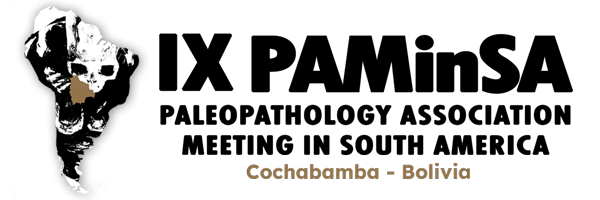2. Symposium and Oral Presentations
2. Symposium and Oral Presentations
In the event that thematic symposiums are proposed, there must be a maximum of two coordinators who will invite two or three participants, with 15-minute presentations and 5 minutes of questions for each one. The symposium proposal must be sent by one of the coordinators, who will be responsible for the presentation of all abstracts. The other participants must register indicating the name of the symposium in which they participate.
The symposiums will be devoted to synthesis works that include the analysis and discussion on a main theme articulated with all the remaining presentations. We promote multidisciplinary approaches.
The presentations will be spaces destined to the oral presentation of the results of individual case studies, ongoing or final investigations. Presentations will be 15 minutes with 5 minutes for questions.
Some thematic axes that we would like to encourage in the presentations, as a suggestion based on some previous PAMinSA programs and as a proposal of this event in Bolivia, are detailed below. Papers that do not fit into these topics may also be registered.
- Climatic events, environmental changes, mobility and health in the past.
The symposium in this thematic axis will address the environmental crisis from a bioarchaeological perspective, reflecting on the impacts and effects of climate change on health and on organic materials in museums and archaeological sites.
- Epidemics and pandemics: bioarchaeological findings.
Este eje temático abordará las enfermedades emergentes y reemergentes y su registro bioarqueológico.
- Problemáticas del estado de preservación de las colecciones bioarqueológicas y su influencia en las investigaciones paleopatológicas.
This thematic axis will address the importance of the conservation of the material to develop research from interdisciplinary approaches. The care, use of protocols and technology for the adequate conservation of the material improves the possibility of obtaining paleogenetic results, among others.
- Traditional medicine, ancestral knowledge, intercultural and interscientific dialogue.
In this thematic axis, we reflect on the information provided by traditional medicine as ancestral knowledge about the therapies used and that can be identified in the bioarchaeological record, with approaches to palynology, paleopharmacology and paleoparasitology.
- Technological advances for studies around paleopathology and paleoparasitology.
This axis will address the evolution of technologies applied to the study of pathologies in bioarchaeological materials. This thematic axis includes other paleopathological studies that may be contributing to the reconstruction of the lives of the ancient settlers.
- diet and nutrition
In this axis, the findings will be discussed, methodologies that allow inferring about the diet and nutrition of the ancient settlers, reflecting on the conditions that influence these situations.
- Dental pathologies.
This table will address dental pathologies and the inferences about their presence in antiquity.
- Forensic medicine and its interface with paleopathology.
In this thematic axis, the technologies used by forensic sciences and their connection with studies on mummies and ancestral organic remains will be discussed.
- Scientific dissemination: contributions to the knowledge of paleopathology to the community.
This table will present a different approach, referring to the popularization of science as a strategy to show the population the contribution of these lines of research. This axis will present videos, comics, cartoons, panel exhibitions that show the history of different diseases of the past and the advancement of paleopathology in a dialogue between scientists, students and the population.

